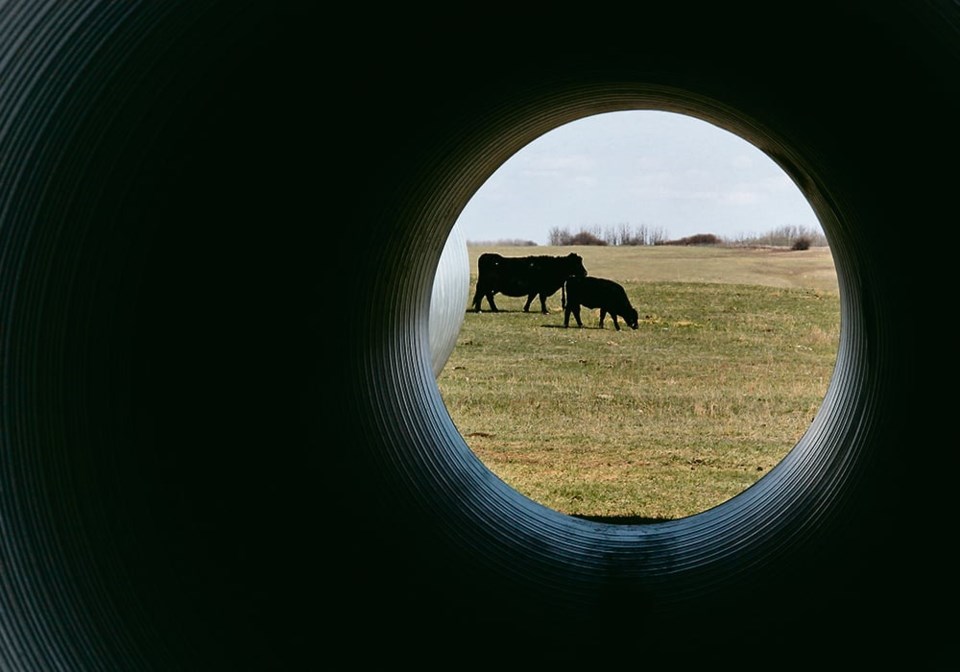REGINA — Livestock producers of 100 years ago wouldn’t recognize their industry today.
From the small homesteads with a milk cow and a handful of other animals and poultry to the large intensive operations of today, animal production for food consumption has become an industry rather than a family food source.
But this isn’t the first time large operations characterized prairie livestock production.
Ian MacLachlan, professor emeritus at the University of Lethbridge, wrote in The Historical Development of Cattle Production in Canada about the huge cattle booms in the late 1800s and early 1900s.
The bison herd had been devastated and there was demand for beef in markets such as the North West Mounted Police posts, mining companies and others. Large ranches were established but then failed due to harsh winters and poor management systems.
Sheep ranches were similarly large at times.
But as MacLachlan notes in his publication, most of these ranches were broken up by 1910 as settlement expanded and homesteads encroached. Homesteaders turned to mixed farming to hedge against risks of weather, pests, disease and markets.
Since then, continual consolidation has characterized all types of livestock production.
After the Second World War, many farmers began to specialize and establish bigger herds and flocks.
“The average number of animals per farm has sloped upwards while at the same time we’ve seen a decrease in the number of farms,” said MacLachlan in an interview. “That’s been happening for 70 years.”
The same is true across livestock species.
Animal agriculture moved from those who bred, fed and finished their livestock for slaughter, to those who may only participate in one phase of the process.
Hogs that once roamed the farmyard, or at least the barn and an outside pen, are now in segregated facilities for farrowing and finishing. Poultry for meat and eggs are also raised largely indoors.
Hog and poultry barns have become biosecure facilities housing thousands of animals to keep them disease-free. Even so, avian flu in the last few years has killed millions of birds.
Animal welfare proponents argue that raising pigs and birds in these conditions is not the right way to go about it.
MacLachlan said there are health benefits for the animals.
For example, the 1952 foot-and-mouth disease outbreak in Saskatchewan ravaged the beef industry but also other livestock that were considered to have been in contact with the infected animals.
“There is growing awareness of the risks of zoonotic disease outbreaks,” MacLachlan said.
“We also have the capacity to monitor animal health and treat animal disease more effectively than we did in those lovely old days.”
He said research and technology have driven the impressive change in animal agriculture.
Nutrition, genetics and management practices have all improved.
Industries have become more environmentally conscious, learning to better contain manure by keeping it out of waterways or composting it.
Genetic advances have been key to increasing production with fewer animals. Holstein cows now deliver more than double the milk they used to.
“Most broiler-sized chickens reach market weight at about 38 days of age in Canada, four times heavier than a broiler chicken of the same age in 1957,” said the Canadian Encyclopedia, to which MacLachlan contributed.
He said markets are also dictating what producers grow rather than accepting what they offer. Red meat and dairy consumption in most of the developed world has declined even though, globally, consumers are eating more meat per capita than ever.
“People’s tastes in food are changing,” he said. “Everything producers do ultimately is arbitrated by the markets.”
In the 1960s and 1970s, the dairy, egg and poultry industries moved to the supply managed system after suffering through surpluses, shortages and chaotic markets after the Second World War. That move to control supply and income in those sectors remains controversial with exporters.
At times, hogs were sold through central desks in some provinces.
MacLachlan pointed to structural change as a trend he expects to continue, whereby production is tied to contractual requirements from large corporations or absentee investor landowners.
“Farmers have lost a great deal of the autonomy that they once had,” MacLachlan said.
But it’s not all bad news.
“We’ll look for entrepreneurial farmers to keep bobbing and weaving and producing the food upon which we all ultimately depend.”




